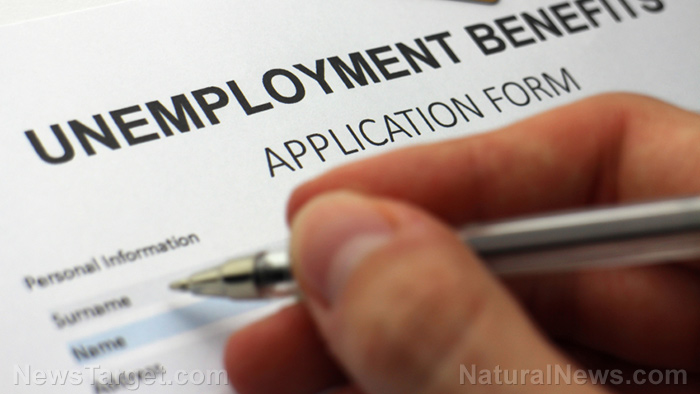
The study used data from 46 states and Washington, D.C. It found that, in the three months following a state terminating its emergency unemployment benefits (EUB), "employment increased by about 37 people for every 100-person reduction in EUB recipients."
"The act of halting by a state was – on average – associated with a substantial rise in employment and a substantial decline in the number of unemployment insurance recipients relative to the other months," wrote the paper's authors. "These observations led us to the conclusion that halting benefits stimulated employment." (Related: Initial unemployment claims remain high as recession fears affect labor market.)
According to the Fed's study, those eligible for EUB programs saw "more than one-for-one replacement rate on lost earnings," whereas pre-pandemic unemployment insurance payments were designed to only replace a maximum of between 40 to 50 percent of one's typical earnings, just enough to help tide people over as they look for another job.
"The strong positive jobs effect that the data uncovered offers another basis for public policy discussions. For example, states that ended EUB in the fall might have accelerated their employment recoveries had they opted for early program cessation," wrote the authors of the study.
"In formal terms, the conclusion that halting benefits caused employment to increase requires that the state's decision to halt benefits was unrelated to unobserved random drivers," added the authors of the study.
The Wuhan coronavirus (COVID-19) pandemic lockdowns led to U.S. employment declining by 22 million people between February and April 2020. This accounts for around 15 percent of the American workforce.
In response to this, the federal government introduced several temporary EUB programs, including some that expanded existing programs to Americans who would not have been eligible, such as contract, self-employed and gig workers. Some of the biggest programs provided weekly payments of $600 during most of 2020. This was then reduced to $300 per week in 2021.
By September 2021, more than half – 26 – of America's governors ended the expanded EUB programs, with 20 halting their programs between June and the beginning of July.
Economy still in tatters despite unemployment decrease
The study comes as the latest job figures from the Department of Labor's Bureau of Labor Statistics (BLS) show that nonfarm payroll jobs increased by over half a million in July, while the national unemployment rate dropped by just 0.1 percent compared to June.
BLS further reported a 4.6 percent decrease in labor productivity during the second quarter of this year as the economy shrank and labor costs rose amid recession fears. It is also the sharpest quarterly decline in labor productivity since 1948.
This data follows a decrease in productivity during the first quarter of the year, making this the second consecutive quarter in which output decreased.
"The resulting productivity declines over these two quarters reduced the average annual productivity growth rate since the fourth quarter of 2019 – the last quarter not affected by the COVID-19 pandemic – to 0.6 percent in the nonfarm business sector," wrote the BLS report. "Output and hours worked in the nonfarm business sector are now 2.9 percent and 1.5 percent above their fourth-quarter 2019 levels, respectively.
Listen to Health Ranger Mike Adams discuss how the Fed will continue raising rates without ever actually tackling inflation on this episode of the "Health Ranger Report."
This video is from the Health Ranger Report channel on Brighteon.com.
More related stories:
US unemployment claims rise to highest level in eight months.
American workers have lost $3,400 in yearly income due to unrelenting inflation.
Jobless claims surge to highest level in 6 months as employers cut jobs due to weakening economy.
Inflation relief stimulus checks handed out by states could fuel even more inflation.
Worker productivity under Biden experienced a 7.5% drop, its biggest decline since 1947.
Sources include:
Please contact us for more information.


















